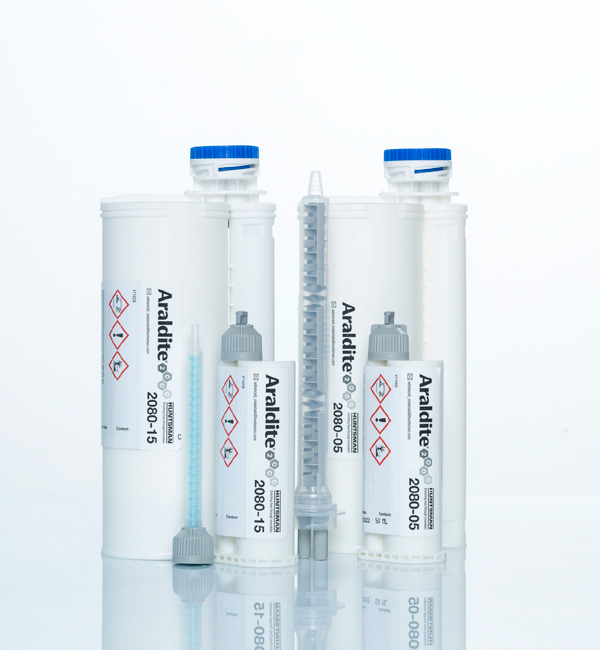Shore hardness testing enables a quick comparison of the flexibility of different materials. Shore hardness can be identified following the ISO 868 standard.
Testing and Simulation of Shore Hardness
Shore testing accurately measures the hardness of elastomeric and plastic material, including adhesives. The two scales most frequently used for determining Shore hardness when materials are compared to each other, such as adhesives to plastics, are Shore-A for very soft to soft (elastomeric) materials and Shore-D for semi-rigid and hard plastics.
Shore hardness is characterized by using an instrument that pushes a specially shaped metal rod or cone into the test material. The higher the numbers on the scale the greater the resistance to indentation, thus indicating a harder material.

Image Credit: Huntsman Advanced Materials
Testing Procedure
Huntsman complies with ISO 868, which is the standard for the Shore hardness test. This standard is used in combination with a durometer; an instrument that pushes a hardened indenter directly into the cured adhesive with a predetermined force and subsequently measures the depth of the indentation.
The shape and force of the indenter, and the duration of its application, affect all results and must remain consistent throughout for accurate measurements. The Shore hardness method determines adhesive indentation resistance based on the depth of penetration of a conical indenter.
Two types of durometer are frequently used:
Shore durometer type A (for softer adhesives) used when type D results exhibit force less than 20 Press: 12.5 ± 0.5 N Max. spring load: 8.065 N Indenter: diameter 0.79 ± 0.03 mm
Shore durometer type D (for harder adhesives) used when type A results exceed 90 Press force: 50.0 ± 0.5 N Max. spring load: 44.500 N Indenter: radius 0.10 ± 0.01 mm
Test Parameters
Huntsman test specimens are based on cast plates of 50 mm x 50 mm x 6 mm of cured adhesive. A minimum of five specimens are used for testing.
Data Provided
Two variations of Shore measurement results are applied: instantaneous hardness is the result of an instant reading without delay when the indenter is applied, while delayed hardness leverages a specific time schema between the application of the indenter and the reading (the time delay must be specified, usually around 5-10 seconds).
Adhesive hardness is expressed by the units of the Shore scale being used (Shore A or Shore D). Values are based on depth of indenter penetration, which range from 0 (full penetration) to 100 (no penetration).

This information has been sourced, reviewed and adapted from materials provided by Huntsman Advanced Materials.
For more information on this source, please visit Huntsman Advanced Materials.